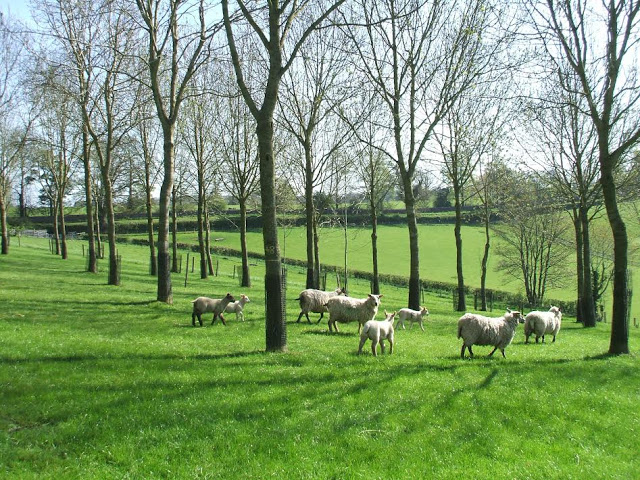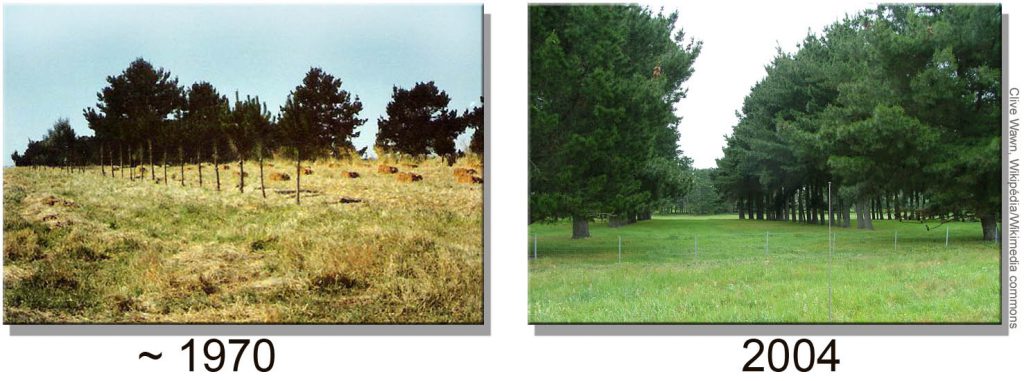
Understanding Arboriculture: Agroforestry
What is Agroforestry?
Agroforestry is the practice of growing trees and shrubs in farmland (either crops or livestock). At its heart, it’s a land management system that reduces dependency on monoculture, helping to create an economically, environmentally and socially sustainable agricultural system. It is widely used in modern farming but has been practiced in the past in various forms (Native Americans used it to cultivate the habitat they farmed in).
Agroforestry is one of the three principal land-use sciences, along with agriculture and forestry.
There are Three Types of Agroforestry Systems and Practices
- Agrisilvicultural systems: This is growing crops and trees together.
- Silvopastoral systems: Forestry being grown where animals are kept on pastures and farms.
- Agrosilvopastoral systems: Trees, animals and crops are combined so that animals can graze after harvesting.

How Agroforestry Works
There are a number of different applications of agroforestry, these practices can be categorised under different headings depending on what problems an environment faces. Whether it be drought or harmful insects or costs and yield requirements agroforestry has applications for many diverse types of farmlands.
For example some applications are,
- Alley Cropping: Planting widely spaced rows of trees, creating alleyways where crops can be grown.
- Boundary Systems: Hedges and trees can be used to fence off crops and prevent people and animals going into the area where crops are being grown and provided a habitat for wildlife.
- Shade Systems: Crops tolerant to shade like coffee are grown under shade systems. This can actually increase yield as well as the quality of the crops harvested.
These are just a few applications of agroforestry (many more exist). In addition to this, the planting of trees and shrubs on farmlands can provide timber, fruit and nuts, providing another source of income for farmers.

The Benefits of Agroforestry and Sustainable Agriculture
Agroforestry has seen many direct and indirect benefits across the world from, being able to grow plants for medicine in places that lack it, to maintaining wildlife and biodiversity. It has contributed positively in environmental, social and economic ways.
1. Environmental
Agroforestry can protect soil from erosion, rejuvenate and restore the soil quality of farmlands. It has also cut back on the need for chemicals like insecticides and herbicides that farmers might usually use to kill insects and weeds.
Agroforestry can reduce agriculture’s impact on the environment. For example, it reduces the need for cutting down vast amounts of trees for farmland and helps to abate deforestation. It can also contribute to carbon sequestration, where plants remove carbon from the atmosphere, this leads to less greenhouse gas emission. Using wood fuel from agroforestry helps people to be carbon neutral and leads to more climate change mitigation.
Agroforestry can also create shelter for livestock and a reliable ecosystem for crops, making them less vulnerable to natural hazards like heavy rainstorm and drought.
2. Social
Agroforestry also has a lot of social benefits and is helping society move forward in a way that doesn’t damage the natural environment. Environmental benefits of agroforestry have led to a raft of social benefits. High quality soil has led to higher quality and quantity yields of fruit, crops and edible oils. This can decrease and eliminate the food shortages that can be a result of monocultures that are affected by natural conditions like drought or countering winds. This diversity of food supplies has decreased the risk of hunger and increased nutrition, creating more sustainable livelihoods in many rural parts of the world.
Agroforestry has given rise to higher incomes for farmers, encouraging social development in communities that rely on agriculture.
3. Economic
Agroforestry can significantly increase profits for farmers because of higher productivity and yields, also increasing the overall household income for farm owners. It can therefore be seen as a driver of economic development at a regional level, providing more opportunities for employment and allowing farming businesses to build up more prosperous and thriving farming communities.
Agroforestry is a flexible and practical way to sustain farms and their produce, whilst increasing biodiversity through more integrated farming systems. Unfortunately agroforestry currently isn’t a particularly widespread occurrence it could well play a significant role in the future of our environment.
Agrofoerestry and Arboculture Equipment
If you’re involved in tree stewardship and management then you’ll need high quality arborist supplies. Our range of arborist gear has been carefully selected and refined to offer you the best value.
